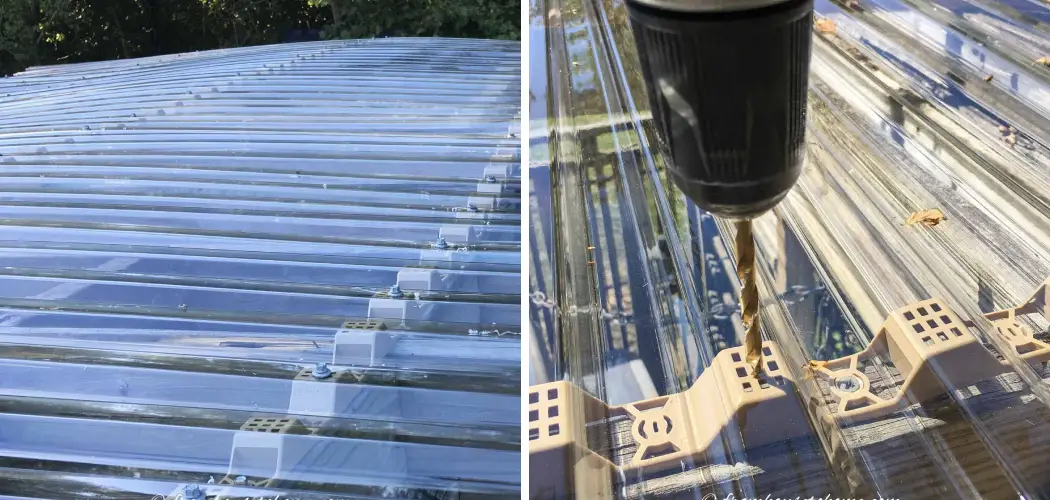Are you considering installing a flat pergola in your outdoor space? It can be an attractive and inviting feature to add to your yard, providing even more shade during hot days – but only if it’s done right with the correct materials. Roofing a flat pergola requires specific tools, techniques, and knowledge to ensure that it is both secure and durable.
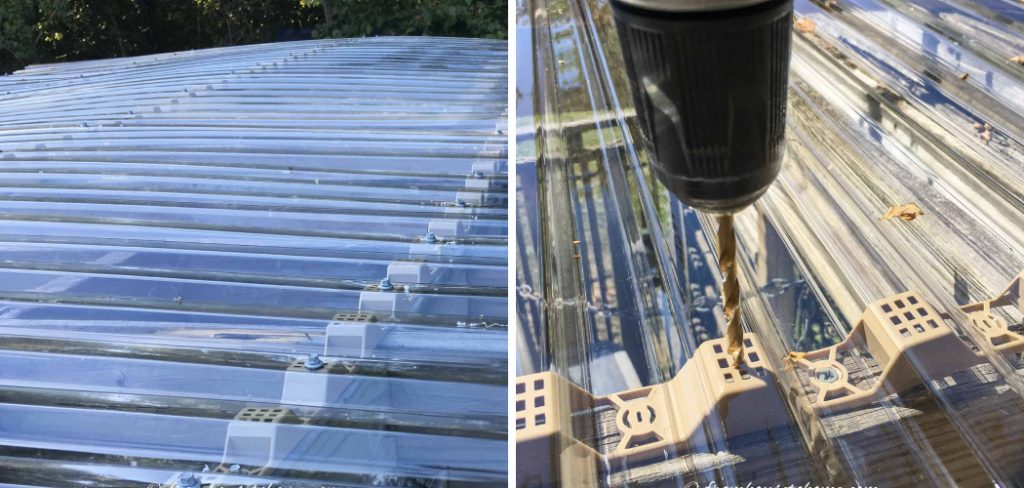
In this blog post, we are going to give you an informative step-by-step guide on how to put a roof on your flat pergola. It is important to know how to put a roof on a flat pergola. Read on for detailed instructions and all of the information you need!
Tools You Will Need
- Tape measure
- Level
- Hammer
- Nails or screws
- Power saw
- Ladder
8 Steps Guide on How to Put a Roof on a Flat Pergola
1. Measure Out the Size
Accurately measuring the size of your flat pergola is a crucial step in determining the kind of roofing material you should use to cover it. It’s important to measure several times, as each measurement must be spot-on to get the right amount and type of roofing material for your needs.
You can take basic measurements with just a tape measure, or use more sophisticated tools like a laser distance meter for greater accuracy. Once the measurements are finalized, decide on the character and shape of this roof covering material—the choices range from standard square shingles to more elaborate shapes and styles.
With a few careful steps, you’ll have all the necessary information to choose exactly what kind of roof you need for your pergola.
2. Prepare for the Installation
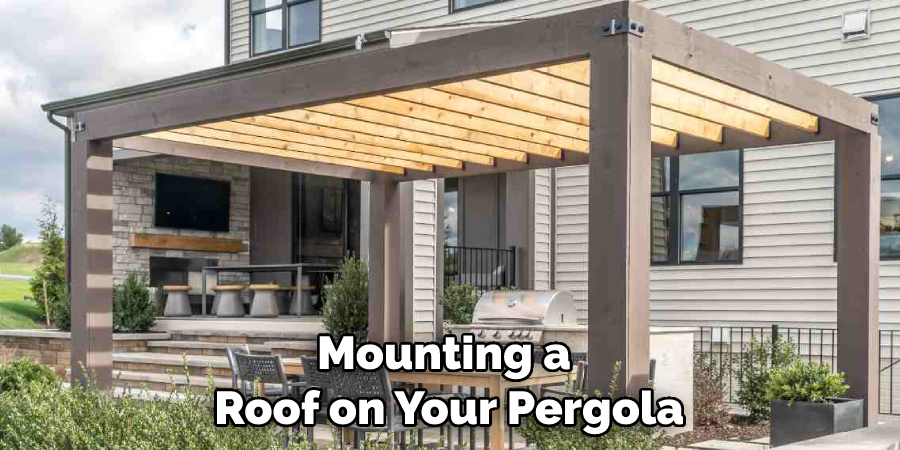
Preparing for installation is the most important step when it comes to mounting a roof on your pergola. Before you start, take a moment to decide where you want the roof to be placed. This will provide you with a guideline and make the installation go much more smoothly.
Once that’s done, use a level to make sure that the roof is completely level and straight as it goes up. Doing so will help keep your roof solid and secure over time, allowing you to enjoy its protection and functionality for many years of outdoor fun.
So don’t be rushed – place your roofing material carefully and plan to double-check with a level before beginning construction.
3. Cut the Roofing Material to Size
When it comes to putting a roof on a flat pergola, it’s important to accurately cut the roofing material. All pieces need to be exactly the right size and fit together perfectly for them to provide adequate coverage and shade.
Take your time when measuring and cutting the materials, double-checking each measure as you go. Make sure you have all the pieces cut before beginning assembly since this will help ensure there are no mistakes along the way. It may take some time, but it will save frustration later on if all measurements are correct from the start.
4. Securely Fastened in Place
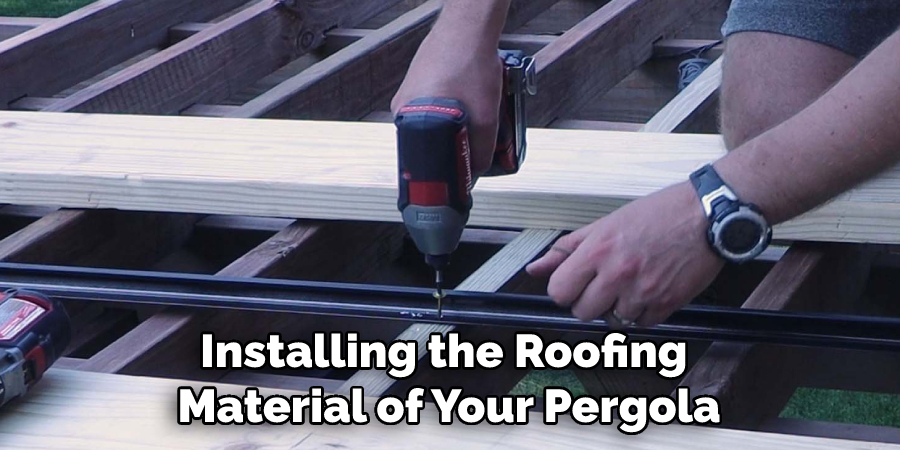
Installing the roofing material of your pergola is the last step in completing your outdoor structure. You want to ensure that the roof is securely fastened so it won’t blow away in windy weather and cause damage. Begin at one corner of the frame and use nails or screws to attach one end of the roofing material to the top of the pergola frame.
Make sure that it is firmly fixed in place as any discrepancy could come back to haunt you down the road when strong winds begin to blow. It may also be a good idea to use a power drill for extra support when securing materials with screws. Now that you have secured your roof, enjoy your beautiful new outdoor space!
5. Attach the Other End
Once you have secured the initial end of your roofing material to the starting side of the frame, it’s important to make sure that the other end is properly attached and secure as well. The key here is to maintain a level and straight edge between these two ends so that they mesh together perfectly and appear seamless.
If you find that one side is sagging compared to its pairing, you may need to restructure or adjust the first part of your installation for equal amounts of tension across both pieces. With some simple tools and metalworking principles, you can achieve a perfectly-level roof for years of outdoor enjoyment!
6. Move From One Side to the Other
Moving quickly but deliberately, begin attaching the roofing material to each corner. The process can be laborious and you want to take your time to ensure a secure attachment that does not leave any unprotected gaps.
As you reach the last corner, double-check your work for any missed connections or air pockets; it is paramount that everything is properly connected and sealed in this weather-exposed part of the home. Moreover, remember to double-check all connections from the interior of the house as well, just to make sure nothing slips by!
7. Measure and Cut the Ridge Cap
Installing a ridge cap is an important final step to protecting any roofing panel from the elements, such as rain and snow. Measuring and cutting the material precisely helps ensure a snug fit that seals out moisture and drafts.
After the ridge cap is measured and cut to size, it should be attached securely to the peak of the roofing panel with nails or screws for additional strength. This not only ensures lasting protection against water damage but also adds a finished look to the completed installation.
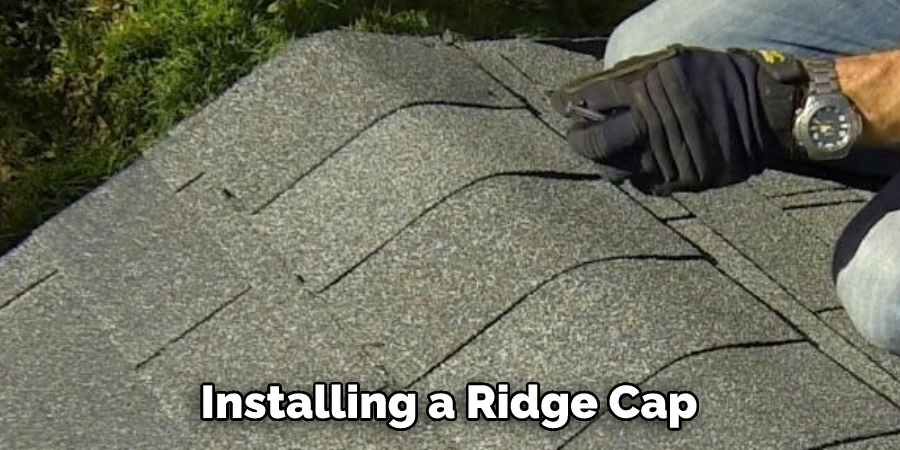
8. Check All of Your Work
Taking the time to double-check your work is always good practice. The process of examining something a second time can help catch unnoticed errors and can give you peace of mind that all your hard work is secure. Even if it takes an extra few minutes, it’s worth it, in the end, to be certain that everything is in order. Performing a final check of all your work should be part of your routine, especially before handing in assignments or other important tasks.
And there you have it – our step-by-step guide on how to put a roof on a flat pergola! With the right materials and knowledge, you can easily create an attractive outdoor area with just a few simple steps. We hope this blog post has helped give you the information and guidance you need to get started on roofing your flat pergola. Good luck!
How to Attach the Roofing Material to your Flat Pergola Frame?
Installing a roofing material to your flat pergola frame is fairly easy and only requires a few tools. Before attaching the roofing material, make sure to attach the purlins or rafters to the crossbeams of your pergola first.
With the correct tools, such as box nails or screws, begin fixing the roofing material with an overlapping of 200mm along the length of each purlin or rafter. Make sure to securely fix each overlap by using the correct spacing and suggested sizes for nails and screws.
This allows for increased strength that will support heavy roofing materials and withstand varying weather conditions. Finally, finish it off with a double row of fasteners at both sides of each purlin for extra security. With these steps, you should be well on your way to having a sturdy flat pergola ready for any outdoor activity!
Frequently Asked Questions
How to Install a Ridge Cap on your Flat Pergola Roof?
Installing a ridge cap on your flat pergola roof is an essential step to ensure that your outdoor area is both structurally sound and aesthetically pleasing. The first step in the process is to measure the length of the pergola’s eaves, then cut Aluminum flashing to fit accordingly. Next, use self-tapping screws to attach the Aluminum flashing to each intersecting edge of the roof, making sure that its pointed end is positioned towards the eave wall.
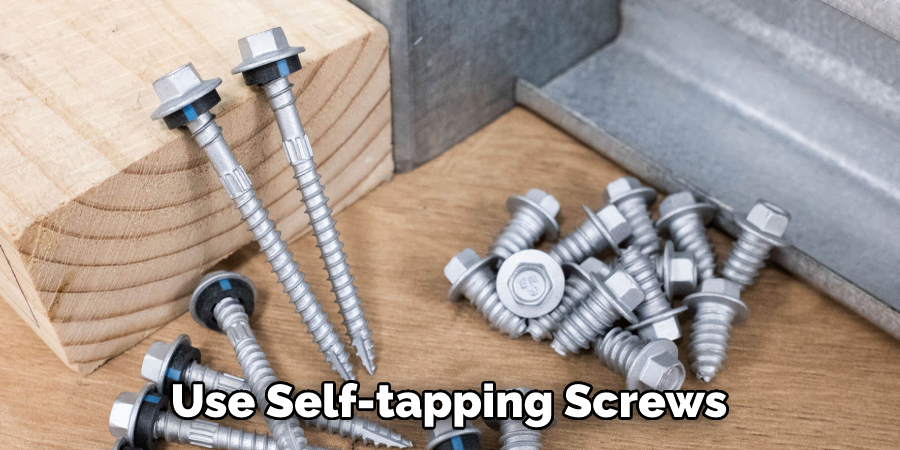
Now you will need to measure for the ridge cap and cut two pieces that align with your roof measurements. Position them on either side of the crest of your roof and secure them together with stainless steel roofing nails.
Run a bead of silicone sealant along every joint between pieces to ensure full protection against any water damage. Finally, put a layer of caulk overall stainless steel nails you have used before stepping back and admiring your freshly installed ridge cap!
How to Protect your Flat Pergola Roof from the Elements?
A flat pergola roof can be a great way to add style and outdoor living space to your home. However, it is important to take steps to protect your pergola roof to keep it looking beautiful for many years.
Whether your pergola roof is made from aluminum, vinyl, or wood, there are several ways you can help protect it from the elements. Applying a waterproof sealant such as wax or a clear coat can help keep moisture away from the surface and prevent fading from exposure to sunlight.
Additionally, an application of UV-resistant paint can also shield the roof materials from sun damage while helping retain the material’s original color and texture. Finally, if you live in an area that experiences high winds or snowfall, adding reinforcement brackets along with thick anchors and screws can reinforce the structure and keep it secure throughout any inclement weather.
Doing these simple things will help ensure that your flat pergola roof stays safe and beautiful for many years!
Conclusion
A pergola with a pitched roof is a great addition to any outdoor space. It provides shade and protection from the elements, and it can be built relatively easily by following these steps. You should carefully determine how to put a roof on a flat pergola. With a few tools and some straightforward instructions, you can turn your flat-roofed pergola into a beautiful, functional retreat in no time. Thanks for reading!
You Can Check It Out to Attach a Pergola to A Deck

